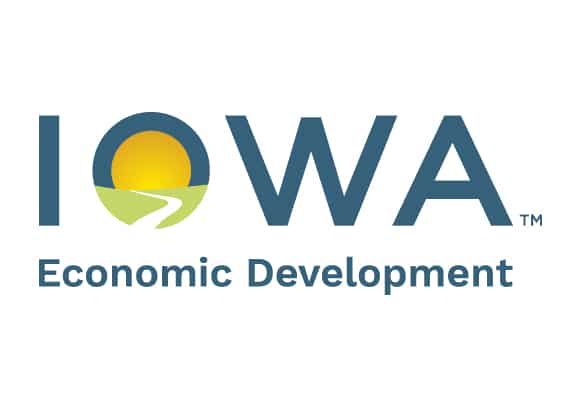Supply managers expect tariffs to push input prices up 7.5% in Q3, Q4 2025

Business Record Staff Jul 1, 2025 | 4:04 pm
4 min read time
959 wordsAll Latest News, Economic DevelopmentThe Creighton University Mid-America Business Conditions Index declined 0.3 points in June, going from 51.0 in May to 50.7 in June, which remains above growth neutral.
The index is an economic indicator for the nine-state region stretching from Minnesota to Arkansas, and uses the same methodology as the national Institute for Supply Management (ISM). It ranges between 0 and 100 with 50.0 representing growth neutral. June was the sixth straight month the index was above growth neutral.
According to U.S. International Trade Administration (ITA) data, the regional economy exported $31.3 billion in manufactured goods for the first four months of 2025, compared to $32.1 billion for the same period in 2024, for a 2.3% decline.
Meanwhile, Iowa’s manufacturing sector saw an 8.1% year-over-year drop in exports.
Iowa: The state’s Business Conditions Index for June declined to 48.0 from 49.9 in May. Components of the overall June index were: new orders at 51.9; production or sales at 47.4; delivery lead time at 54.2; employment at 41.9; and inventories at 44.8. According to ITA data, the Iowa manufacturing sector exported $5.0 billion in goods for the first four months of 2025, compared to $5.4 billion for the same period in 2024, for an 8.1% decline.
“The Creighton survey continues to record job losses with accompanying higher wholesale inflation. Supply managers remain concerned that rising tariffs will push inflation significantly higher. On average, supply managers expect input prices to climb by 7.5% in 2025,” Ernie Goss, director of Creighton University’s Economic Forecasting Group and the Jack A. MacAllister chair in regional economics, stated in a press release.
Comments from supply managers in June:
- “We are starting to experience more notification on tariff increases and starting to see shortages of products.”
- “Bird flu is still impacting eggs, liquid eggs, pricing, etc. Freight continues to increase. Service levels are noticeably down and lowering expectations have been normalized from five years ago. Much more involved with managing vendors, service.”
- “The county we are located in has a very low unemployment rate, less than 2%, and we have several large employers that pay well. Our business is slow or we would have a serious shortage of workers.”
- “Tariffs drive up imported and domestic steel and aluminum prices.”
- “Expect a significant increase in costs over the next two months.”
- “While we are getting applications for positions, about half of them are from applicants wishing to work remotely, which has taken on a different connotation as time goes on. For some positions, such as sales, remote work is fine. That won’t work for our current supply chain team – it is too collaborative and responsive.”
Employment: The June employment index was unchanged from May’s weak 49.4.
“First quarter employment was pushed higher due to higher production in anticipation of the fallout from tariffs. However, readings from the last three months represented a return to manufacturing job losses in the region,” Goss stated.
U.S. Bureau of Labor Statistics data show that the region shed 9,900 (-0.7%) manufacturing jobs over the past 12 months. The U.S. lost 88,000 (-0.7%) manufacturing jobs over the same period.
Wholesale Prices: The June price gauge climbed to 67.9 from 67.4 in May.
“The regional inflation yardstick has moved into a range indicating that inflationary pressures are moving higher at the wholesale level. However, due to slowing regional and U.S. economies, I expect the Federal Reserve to cut interest rates at either its July meeting on July 29-30 or its Sept. 16-17 meetings,” Goss stated.
On average, supply managers expect tariffs to push input prices up by 7.5% in 2025.
Confidence: Looking ahead six months, economic optimism, as captured by the June Business Confidence Index, increased to 50.0 from May’s 43.2. “Despite concerns regarding tariffs, supply managers continue to see improving economic conditions. One in four supply managers expect rising economic conditions for their firm over the next six months. This is up from one in five last month,” said Goss.
Inventories: The regional inventory index, reflecting levels of raw materials and supplies, fell to 46.9 from May’s 51.6. “Rapid expansions of inventories in the first quarter are now being offset by pullbacks in buildups,” said Goss.
Trade: Recent uncertainty regarding tariffs and trade restrictions pushed new export orders lower for the last three months. New export orders slumped to 43.4 from 44.8 in May and 46.2 in April. As a result of record imports for the first two months of 2025, supply managers pulled back on purchasing from abroad in March, April, May and June. The June import index increased to a still very weak reading of 30.0 from 29.8 in May and April’s record low of 12.5.
According to ITA data, the regional economy exported $32.1 billion in manufactured goods for the first four months of 2025, compared to $31.3 billion for the same period in 2024, for a 2.3% decline. In terms of export gainers, North Dakota registered the top gain with a 29.7% addition, and South Dakota recorded the largest loss with a 20.4% reduction in exports of manufactured goods.
Other survey components of the June Business Conditions Index were: new orders increased to 52.4 from 51.0 in May; the production or sales index sank to 48.5 from 49.4 in May; and the speed of deliveries of raw materials and supplies rose to 56.5 from May’s 53.7. Higher readings indicate slower deliveries and rising supply chain disruptions or delays.
The Creighton Economic Forecasting Group has conducted the monthly survey of supply managers in nine states since 1994 to produce leading economic indicators of the Mid-America economy. States included in the survey are Arkansas, Iowa, Kansas, Minnesota, Missouri, Nebraska, North Dakota, Oklahoma and South Dakota.
Editor’s note: This story was updated at 8:23 on July 3 to replace data from the International Trade Administration with updated information.








